Jeju’s stonelifting legends
Guest article by Richard Pretti
In the past, each village on Jeju Island had two to six lifting stones. Lifting stones are known by a wide variety of names in Korea. They are commonly called deuldol (들돌) on the mainland, while in Jeju they are known as deumdol (듬돌), ddeumdol (뜸돌), deureumdol (들음돌), deungdol (등돌) or ddeungdol (뜽돌).
These stones were placed at the entrances to villages and under shade trees for local youths to test their strength. Villages with heavier stones were afforded bragging rights, and residents made fun of the size of lifting stones in other villages.
There was even a village on the east coast of the island famed for the strength of its men. The village (presently known as Siheung) was called Simdol, which directly translates as “strength stone”, but meant “lifting stone”.1
Landowners used lifting stones to determine the strength of farm laborers, and thereby the wages offered — like similar stones in Iceland and Sweden.
Stonelifting also took place at festivals throughout the year. In modern-day Jeju, stonelifting was revived at the annual Fire Festival in early spring.
There were 6 levels involved in Jeju’s lifting stone competitions:
- Lifting the stone off the ground with two hands.
- Clutching the stone to your stomach.
- Straightening your back with the stone.
- Bringing the stone up to your chest.
- Taking a few steps while carrying the stone.
- Carrying the stone to a designated location in the village.
At “level 6”, the man was recognized as a true “jangsa” — “strong man”.2
Jeju’s stonelifting culture began to die out around the 1950s. Although many of Jeju’s lifting stones have disappeared, they can still be found in villages and museums across the island. Some stones are meant only for display, while others wait silently for the next man or woman to come along and test their strength.
I have been unable to find any sources that provide a comprehensive list of the locations of remaining stones. However, there are a handful of newspaper articles about particular stones. Taking trips to village offices, scouring village history books, and asking elderly residents of villages has proved successful in locating stones.
The stones I have been able to locate are now on the liftingstones.org map. Among the locations are the Lifting Stone Street — where one can find several stones. Another is a guksu (noodle soup) restaurant in the village of Hallim called “Lifting Stone”. The owner’s grandfather placed a lifting stone onto the rock wall around his property, where it can be viewed today.
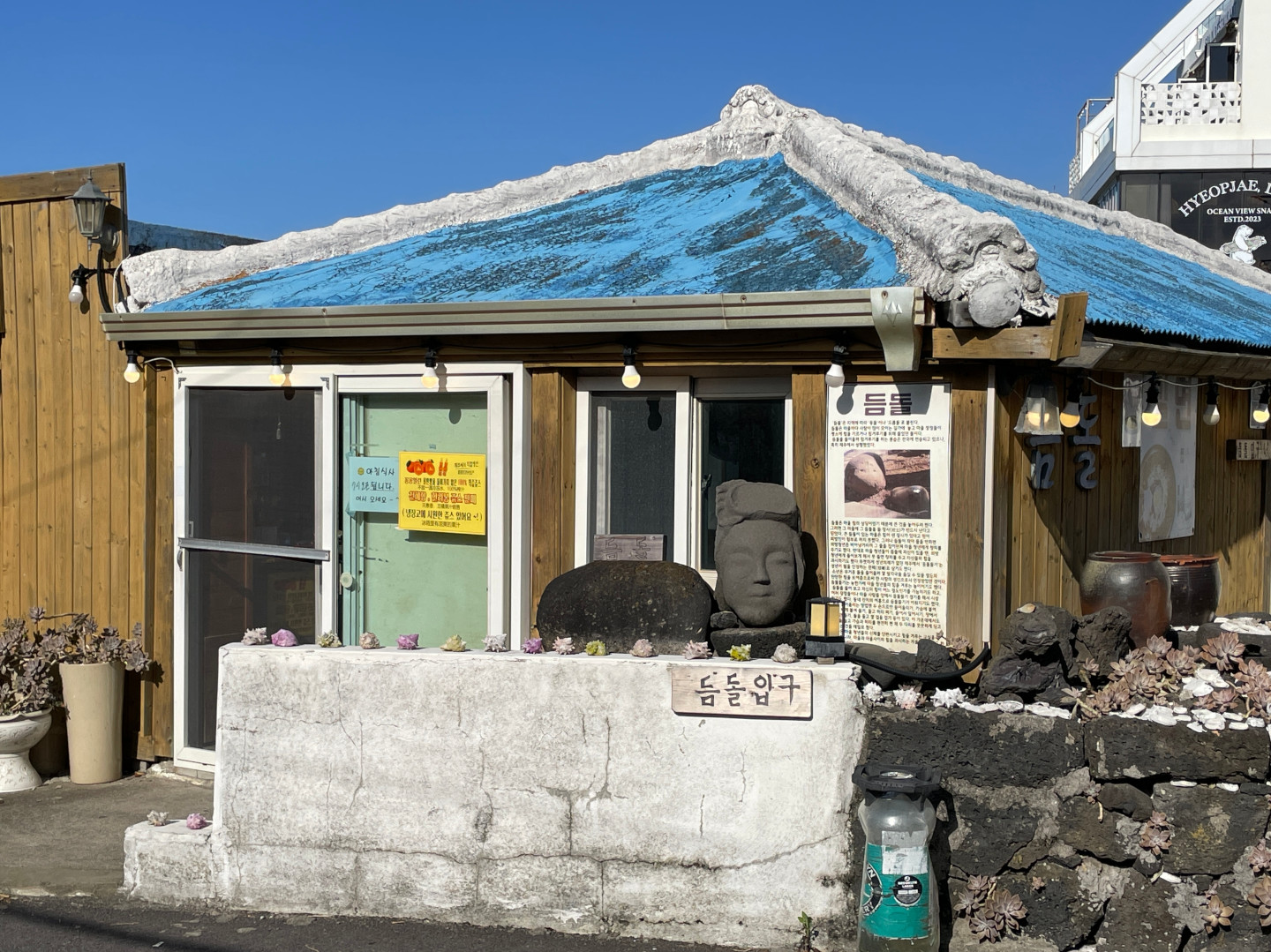
Jeju has a great number of variations of stonelifting stories, which were told all across the island. The following three stonelifting legends are extracts from my book 99 Legends of Jeju Island.
Professor Hyun Yong-Joon recorded and transcribed these legends of Jeju from the 1950s through to the 1970s, and translated the narration into standard modern Korean, leaving most of the dialogue in the original Jeju language/dialect. I translated these legends into English for my book.
Legend 36. Officer Mun’s Daughter-in-Law
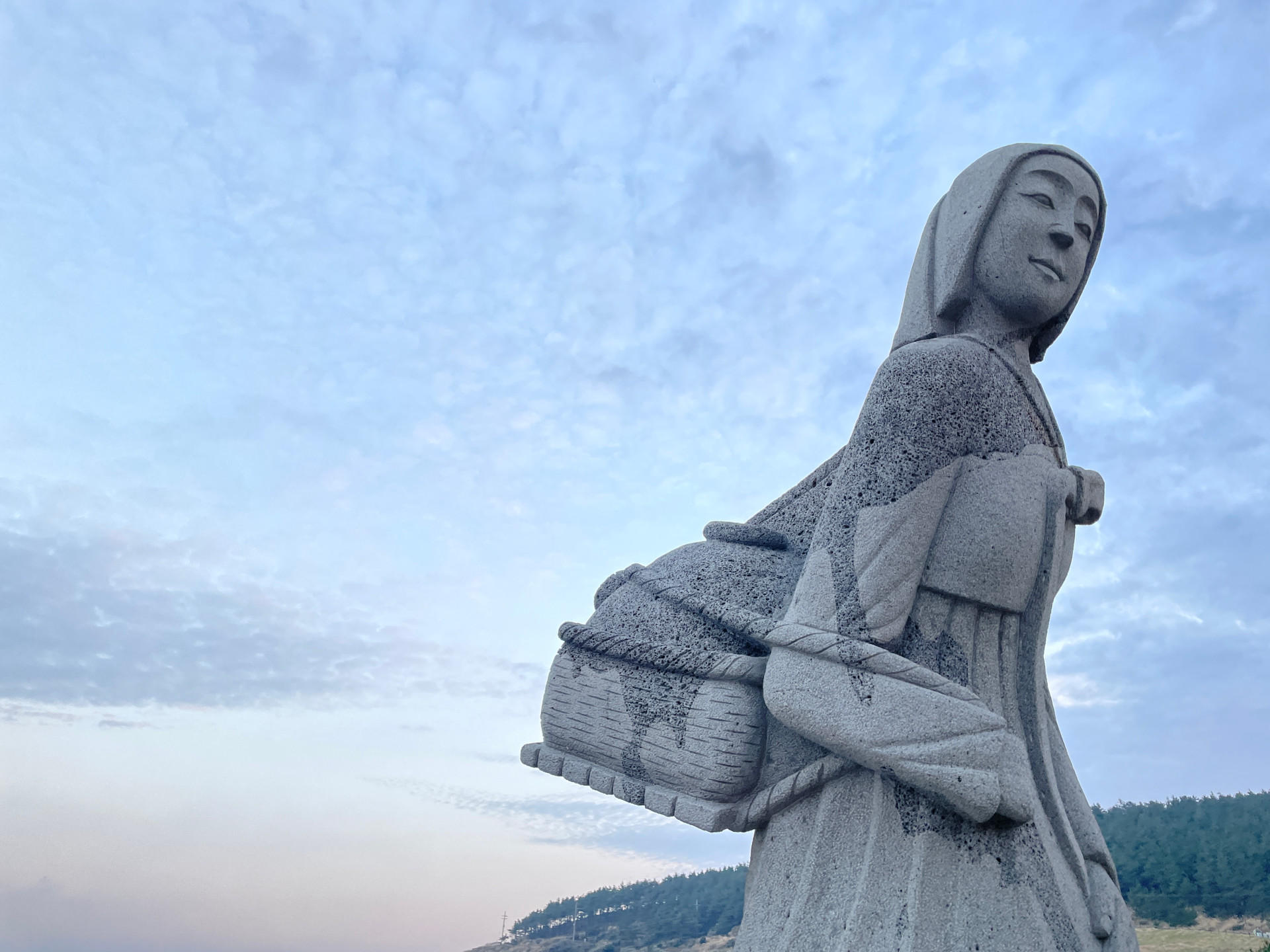
About one hundred and fifty years ago, the son of a man named Officer Mun married a woman from Gimnyeong Village. As per local custom, she moved to her husband’s family’s home, which was in Sehwa Village. In those days, it was a new bride’s duty to go and fetch water for the whole family. Officer Mun’s new daughter-in-law also dutifully shouldered a water jug each day and went back and forth to the local spring. On her way there, she had to pass through an intersection where she would inevitably find the neighborhood boys gathered around the local lifting stone.
A lifting stone was a large round stone that was used by the local youth to test each other’s strength. If an especially large stone was used and the neighborhood had someone capable of lifting it, everybody living in the area felt entitled to brag about it. The larger the stone, the less likely someone from another neighborhood would dare challenge their dominance.
Each time Officer Mun’s daughter-in-law went to fetch water, she would take in the scene around the lifting stone. It did not look all that heavy, yet the local boys kept stubbornly trying to get it off the ground, failing each time. She wanted to know just how heavy it was, so she decided she should give it a try herself sometime.
One morning, she left the house early to fetch water. There were no boys around the lifting stone, as it was still too early. Seeing her opportunity to test her strength against the stone without anyone watching, she grasped it and heaved, without taking the water jug off her back.
The stone was so heavy that the strongest boys could barely get it an inch off the ground, but she managed to lift it up with no problem. Just for fun, she took a few steps forward and launched the stone into the air towards a field above the road. It landed with a thunk in the dirt, carving out a little crater.

When the neighborhood boys gathered together that day, they didn’t see the lifting stone. Eventually, they found it in the corner of the field up above the road. Wondering how on earth it had gotten there, they started throwing out all sorts of theories. Somebody had actually seen Officer Mun’s daughter-in-law on her way to fetch water that morning, and they finally concluded that no other person had the opportunity to move the stone.
Rumors of the deed spread, and eventually reached Officer Mun. He said the story simply could not be true. Nonetheless, he decided to ask his daughter-in-law about it, just in case, saying, “Did you by any chance move the lifting stone?” “Yes,” she replied, “I saw how much trouble the local boys were having when they tried to lift it, so I decided to see how heavy it was. Since it was so light, I gave it a good toss into a nearby field.”
Officer Mun was as surprised as he was ashamed. He scolded his daughter-in-law and told her to bring him a cane right away. He made her roll up her skirt and gave her five or six lashings on the calves, yelling, “Don’t even think about pulling such a trick again! Girls should never touch the things that boys play with. Go and put that stone back where it was.” Officer Mun’s daughter-in-law went right out and returned the lifting stone back to its original spot.
Based on the account given on February 28, 1975 by Kim Si-Hwa (김시화, 80) of Sehwa-ri.
Legend 37. The Daughter-in-Law and the Lifting Stone
Around a hundred years ago, the Gyeongju Kim clan family of Taeheung Village brought home a new daughter-in-law one day. There was a lifting stone in front of the Kim family’s house, and the local boys got together every day to raise it up as high as they could. The Kims’ new daughter-in-law found this daily gathering quite annoying. Each day when she went out with her water jug to go fetch drinking water, she would encounter the boys outside the house making a fuss. She was new to the household, and as a woman, it was expected that she not interfere with the affairs of men. So every time she went outside and ran into the neighborhood boys, she had to hold her tongue, even though she wanted to tell them to move the stone elsewhere. The woman considered this quite unjust.
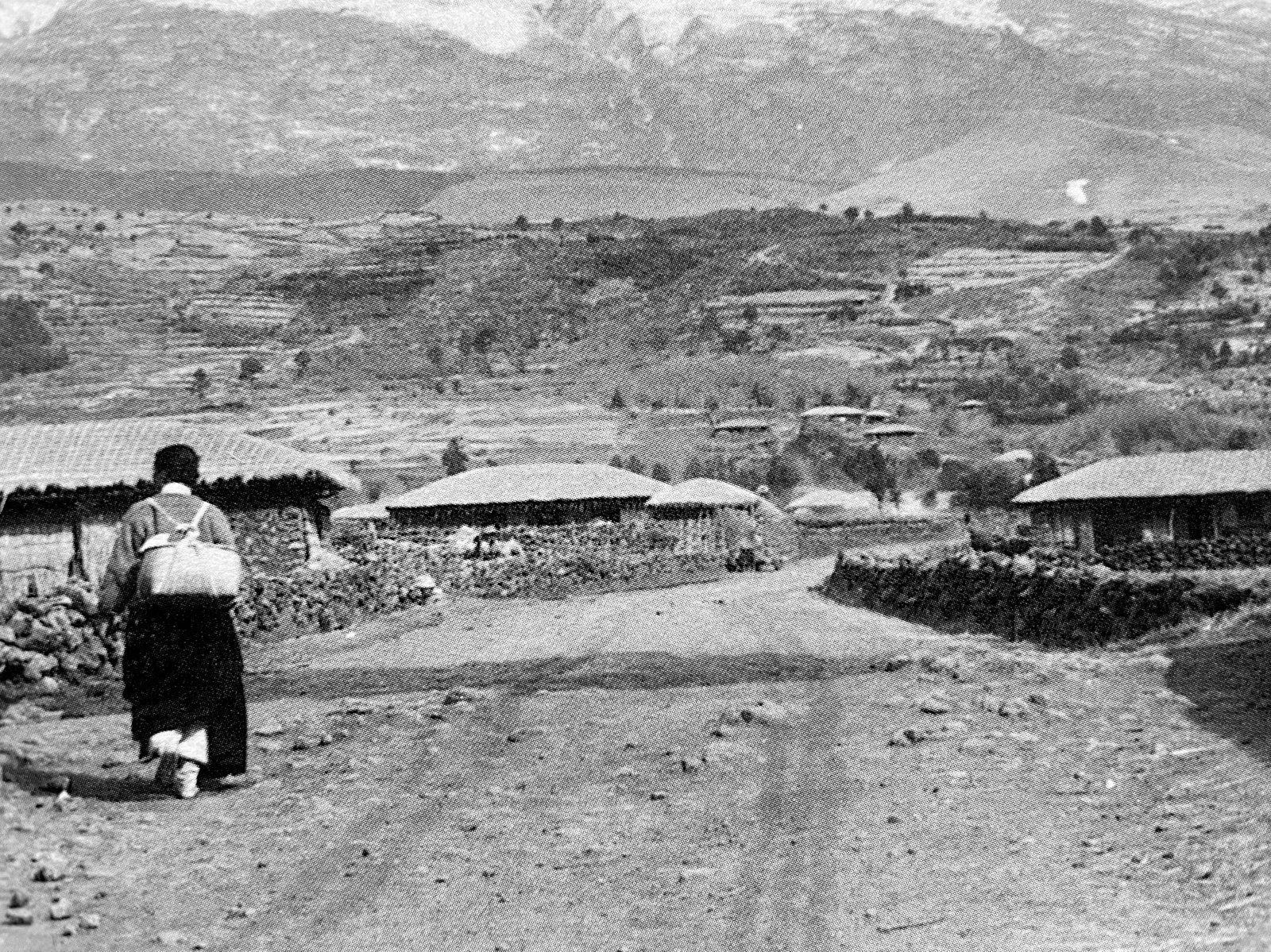
One day, on her way to get water, none of the neighborhood boys were out in the road. She decided to take the opportunity to get rid of the troublesome rock once and for all. The Kims’ daughter-in-law, still shouldering the water jug, picked up the lifting stone. The boys were always going on about how heavy the stone was, but she was able to lift it with ease. The stone, you must understand, was anything but light. Strong boys in the neighborhood could just barely get it a hair’s breadth off the ground; exceptionally strong ones could lift it an inch. The strongest of them all could only raise it up about a handspan.
The Kims’ daughter-in-law picked up the stone and tossed it over a wall into a large field owned by a neighbor. There was quite a commotion when people discovered that the stone was missing. After searching around, they finally found it in the field and began to look for the person responsible for such a feat of strength. They eventually realized that it had been the Kims’ daughter-in-law. The neighborhood boys tried their best to figure out how such a woman could have managed to move the stone, but they had no success. With no other option, they finally went to the Kims’ daughter-in-law to beg for an answer. Feeling ashamed, she sent them away without a word. During the night, she snuck out and moved the stone to a street a good distance away from her house, where she left it sitting on the corner.
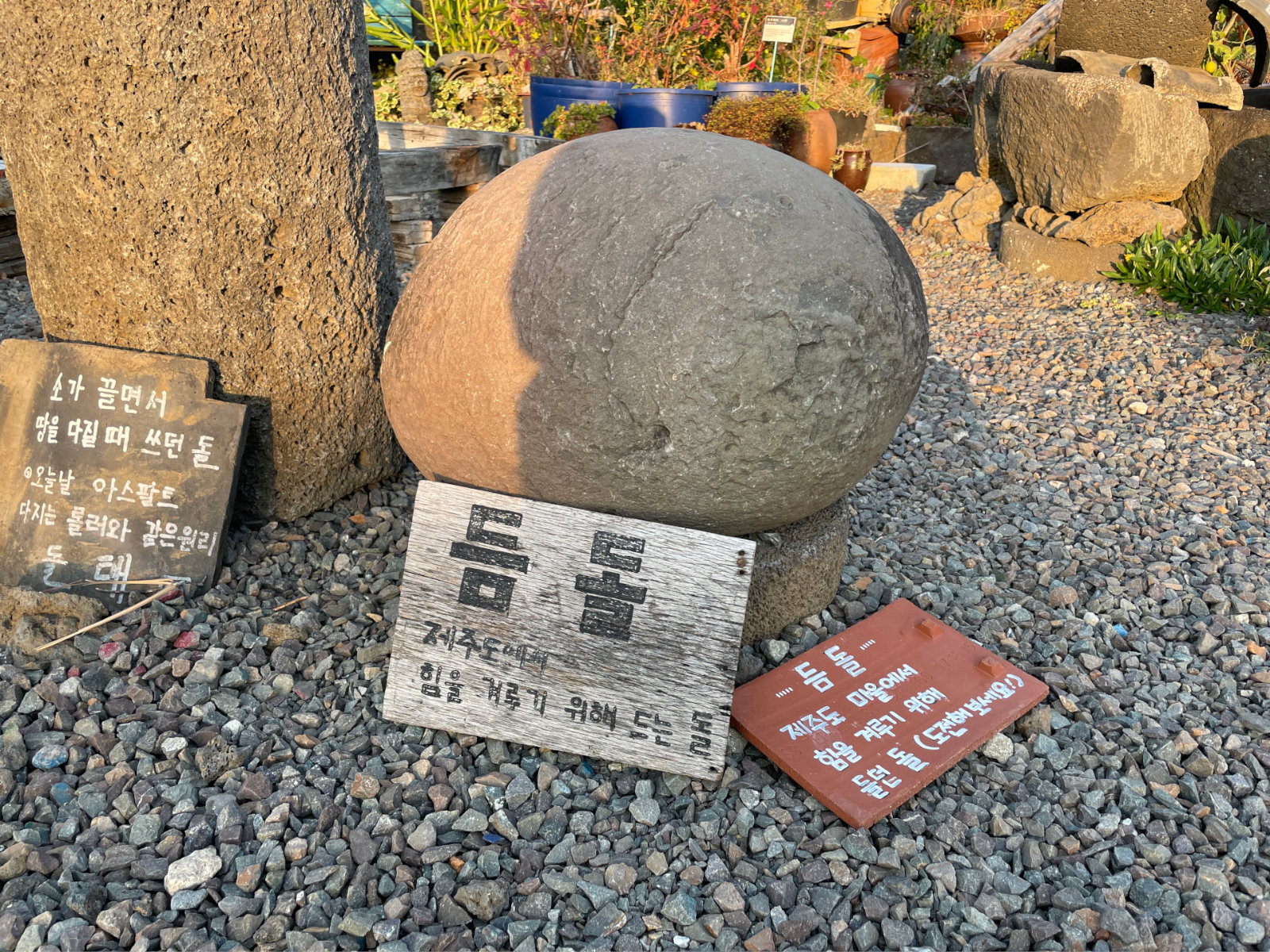
Based on the account given on March 2, 1975 by Kim Gi-Ok (김기옥, 70) of Taeheung-ri.
Legend 38. Grandma Kang of Simdol Village
Around one hundred years ago, when a certain woman with the last name Kang was young, she got married to a man surnamed Bu. They were both from the same village of Simdol. The young woman, who later became known as Grandma Kang, had been exceptionally strong from the time she was little.
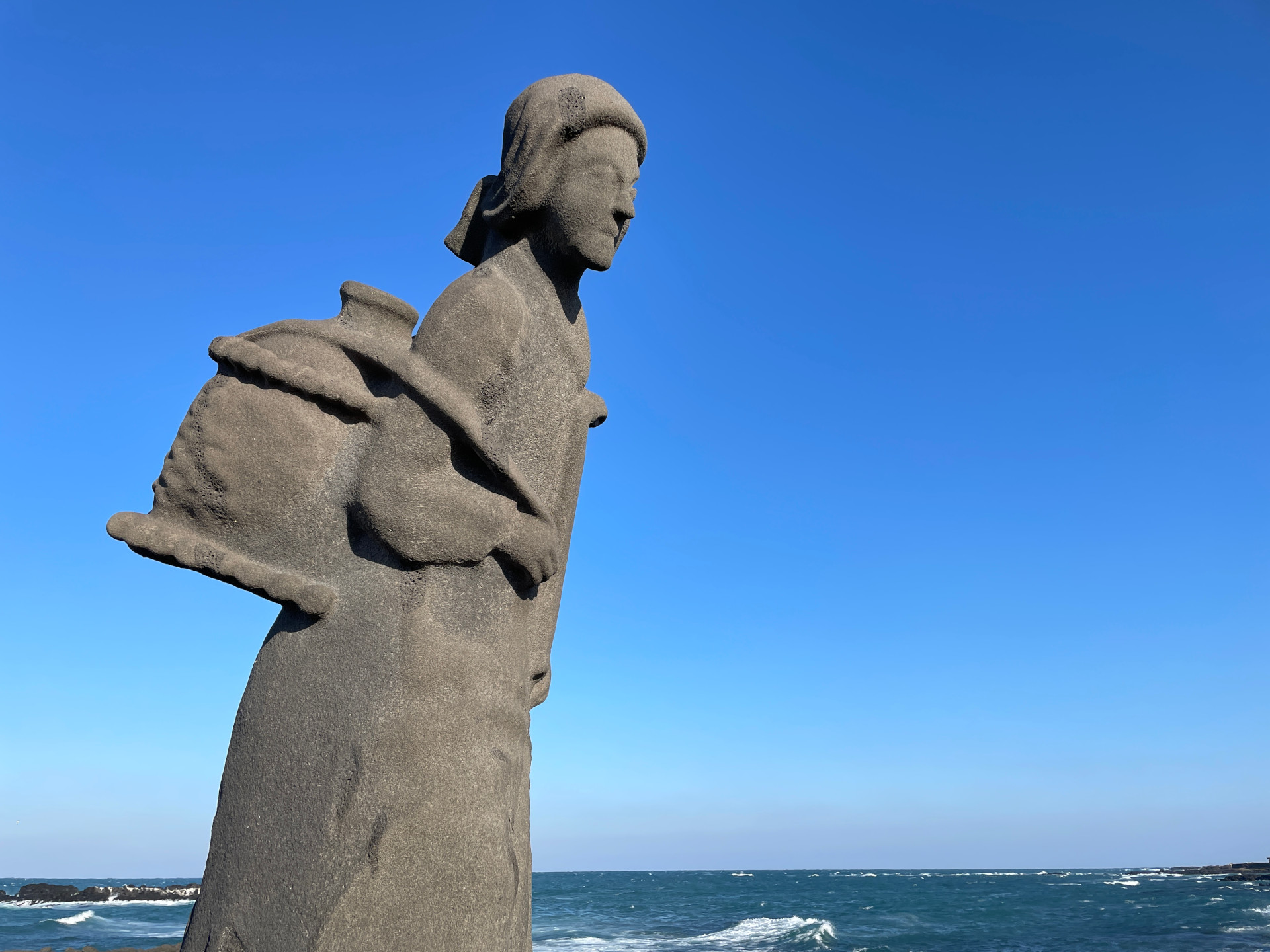
There was a village lifting stone on the way to her new husband’s home. The local youths would often gather around it and test their strength by trying to lift it up as high as possible. The village lifting stone was the largest among those of all the surrounding villages, which meant that the people of Simdol were the strongest in the area. The locals used to make fun of the size of the lifting stone in the neighboring village of Ojo, saying such things as, “Your lifting stone is about as heavy as a little flour dumpling!”
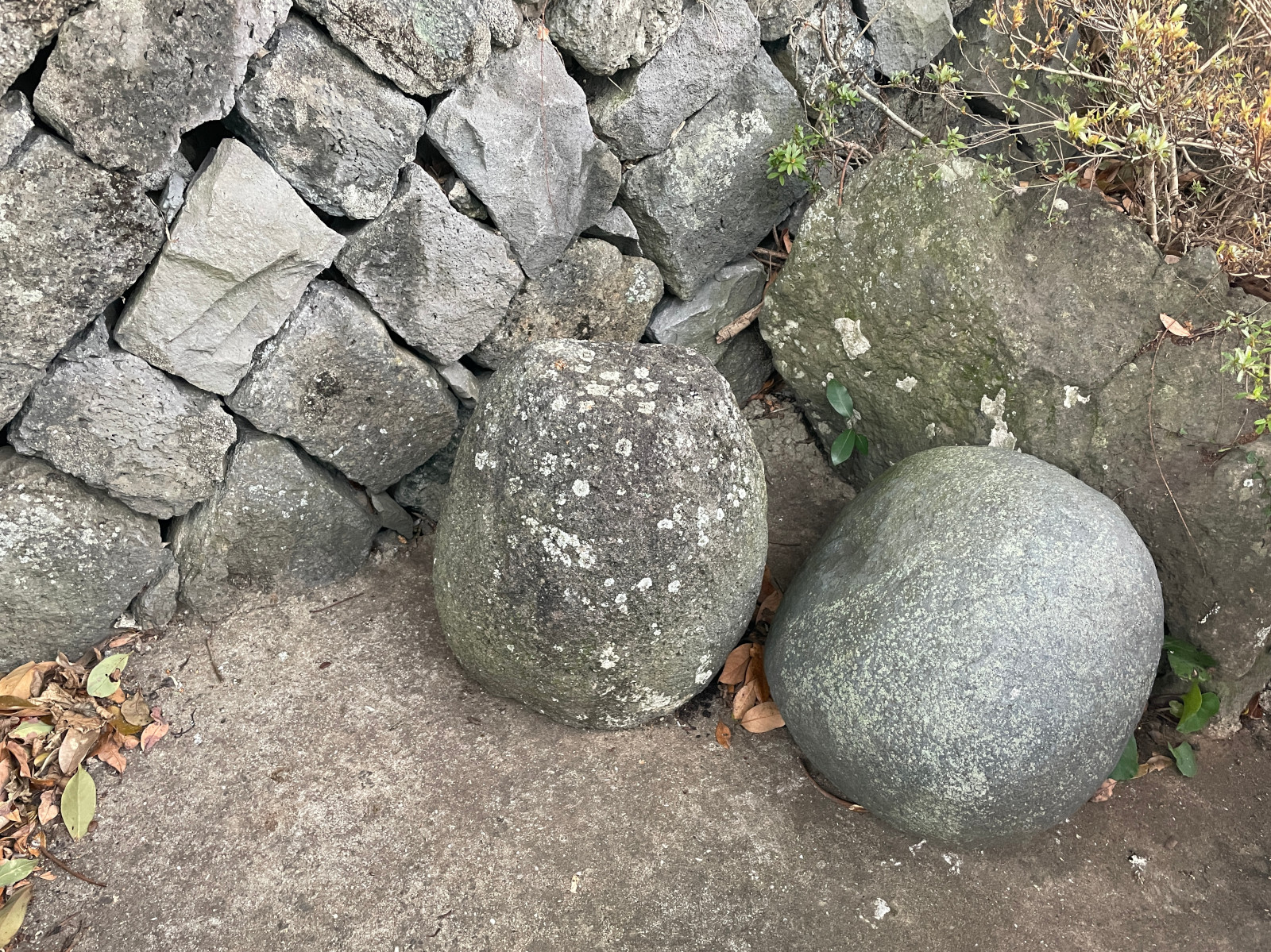
Not long after Grandma Kang had moved in with her new husband, she went out early one morning to fetch water. It was not quite light out yet, and Grandma Kang was taking an unfamiliar route. She didn’t see the lifting stone and stubbed her toe on it. Grumbling about the “annoying stone that was just left lying in the middle of the road,” she stooped down, still shouldering the water jug, picked up the stone, and hurled it into a nearby rice paddy. It landed with a thud and made a deep impression in the mud.
The next day, the local boys discovered the lifting stone in the rice paddy and started looking for the person who was strong enough to toss it there. They were not successful. They pooled their strength and tried to move the stone back to the road, but they could not get it out of the mud. Grandma Kang watched them as they tried but failed to move it. Thinking it quite funny, she climbed up into the rice paddy, lifted up the stone and threw it back where it originally lay.
Based on the account given on February 28, 1975 by Yang Gi-Bin (양기빈, 69) of Siheung-ri.
Author
Richard Pretti has been exploring and studying the natural environment, history and culture of Jeju Island since 2002. He has taught English and translation at Jeju National University, Cheju Halla University and the Jeju provincial government’s Public Policy Training Institute. His translation work includes a wide range of tourism, educational, historical and cultural material related to Jeju Island. He shares his passion for Jeju through his website jeju.guru.
If you’d like a copy of Richard’s book 99 Legends of Jeju Island, you can purchase one from online booksellers and directly from the author.
Contributions
With massive thanks to Richard for sharing his research into Jeju’s stonelifting culture and for allowing me to publish these three chapters from his book.
References
Read the liftingstones.org letters
Join thousands of other stonelifters who read the world's most popular stonelifting newsletter.